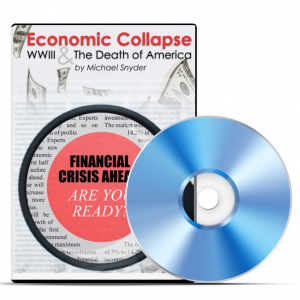 by MN Gordon, Economic Prism
by MN Gordon, Economic Prism
The Commerce Department reported on Wednesday that wholesale inventories rose 0.5 percent in August. What’s more, according to the Commerce Department sales at wholesalers rose 0.9 percent in August…the first increase since April. What this means exactly we don’t quite know. But the experts have some ideas…
Yelena Shulyatyeva, an economist at BMP Paribas in New York, says it’s a sign “companies want to stay cautious ahead of the Presidential election.” Peter Newland, of Barclays, reviewed the same report and concluded it “offered an encouraging sign that demand is beginning to rebound.”
In other words, no one really knows what these numbers mean. Yet even if they did, what good would they be?
For the life of us, we can’t comprehend what value these numbers have. What we mean is the integrity of economic data has become as questionable as the sincerity of a John Edwards paternity admission. The numbers, like words out of Edwards’ mouth, exist; but they can’t be trusted.
From our perspective, the economy and the financial system are now so distorted all reference points are gone. Things are drifting out of orbit. Economic data has become nothing more than etched lines inside a cave dwellers grotto. Here’s why…
Picking the Pockets of Dollar Savers the World Over
An industrious fellow works 200 hours a month and brings home a $5,000 monthly income. He buys a new pair of shoes. The shop owner counts this against his inventory and includes this in the following order from the wholesaler.
But then, during the same month, Federal Reserve Chairman Ben Bernanke prints up $40 billion dollars as part of his brand new QE3 program. Where does the money come from? Whence does it go?
We are told that it goes to buy mortgages. That this will lower mortgage rates and prop up the housing market. We’re also told that this will help underwater borrowers…that they’ll be bailed out and banks holding non-performing loans will be able to transfer them to the Federal Reserve’s books.
But what about the other side of the ledger? How can these bad mortgages become assets for the Fed? Quite frankly, they can’t.
The bad debts still must be written off. A default must still occur. Someone must pay for them.
But in the world of Ben Bernanke neither the lender nor the borrower must pay the bill. Rather, he takes action to conceal the mass defaults…to hide them from open market operations. To protect the banks, Bernanke’s actions inflate the currency and indirectly pick the pockets of dollar savers the world over.
Bernanke’s actions also disfigure the wholesale numbers…
Something funny from all the funny money happens to the wholesale inventories. Perhaps lower borrowing costs encourage credit based spending, which draws down wholesale inventories. To a Princeton economist it appears that the funny money has contributed to economic growth.
But it has really contributed to greater levels of debt. In effect, the economic growth has been borrowed from the future…and elementary school children are left to pick up the tab. Moreover, GDP growth becomes a proxy measurement of increases in debt.
Other consequences that aren’t so funny also result from all the funny money. Here we’ll offer one such example…
Rising Food Prices are No Laughing Matter
The vicious summer drought has brought forth rising food prices. Farmers should begin stocking up on used farm equipment now rather than later. No doubt, government mandates requiring that we put corn syrup in our gas tanks factored into the price increases. But that’s just the beginning…
When you add the Fed’s massive money printing program into the mix, there’s a potent potential for food prices to explode. Of course, we don’t know the future – this is merely conjecture. But we do know the past…
For example, we know when an infinite supply of digital monetary credits is rapidly emitted into existence an effect of rising prices occurs when measured against a more finite supply of resource production. We believe this is a major reason why the Food and Agriculture Organization’s food price index increased 140 percent over the last 10 years.
Unfortunately, this is only the beginning. When the effects of QE3 kick in and intensify the effects of supply shortage from the summer drought, food prices will explode. Drawing from the past we can tell you tomorrow’s headlines…and they are no laughing matter…
“Hungary stomachs take to the streets as global food costs jump 50 percent in less than a year.”
Newspapers in cities across the globe will report this. Remember where you read all about it first.
[MN Gordon (send him email) is the editor of the Economic Prism. Visit Economic Prism. The Economic Prism is published by Direct Expressions LLC. Subscribe Today to the Economic Prism E-Newsletter at http://www.economicprismletter.com]









